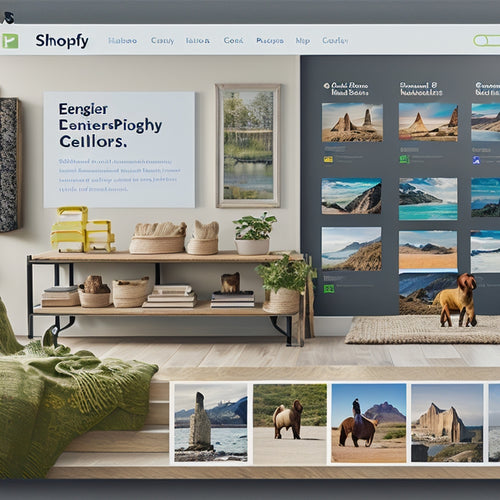
Shopify Experimentation: Optimizing Conversions
Share
Are you looking to optimize conversions and boost sales on your Shopify store? Experimentation is the key! By testing different elements on your website, you can identify what drives your customers to take action and make it easier for them to convert. In this blog, we'll dive into the world of Shopify experimentation and provide you with practical tips, real-life examples, and best practices to help you optimize conversions like a pro.
Common Conversion Issues
Before diving into experimentation, let's address some common conversion issues you might be facing:
- Your website is slow and hard to navigate
- Your checkout process is confusing or too long
- Your product pages lack essential information or images
- Your CTA buttons aren't compelling or visible
Benefits of Experimentation
Now, let's talk about the benefits of experimentation:
- Increased conversion rates: By testing different elements, you can identify what works best for your audience and make data-driven decisions to improve conversions
- Improved customer experience: Experimentation helps you understand your customers' needs and preferences, allowing you to create a website that is easy to use and enjoyable to navigate
- Reduced guesswork: With experimentation, you can eliminate guesswork and make decisions based on real data, increasing your chances of success
Types of Experiments
There are two main types of experiments you can run on Shopify:
- A/B testing: Compare two versions of a page, such as a product page or checkout page, to see which one performs better
- Multivariate testing: Test multiple elements of a page simultaneously, such as the headline, CTA button, and product image, to determine which combination performs best
Step-by-Step Guide to Experimentation
Follow these steps to get started with experimentation:
- Identify your goals: Determine what you want to achieve with your experiment, such as increasing add-to-cart rates or checkout conversions
- Define your hypothesis: Make a prediction about which version of your page will perform better based on your research or insights
- Set up your experiment: Use Shopify's built-in experimentation tool or a third-party app to create your experiment and assign traffic to different versions of your page
- Run your experiment: Let your experiment run for a sufficient amount of time to collect meaningful data
- Analyze your results: Evaluate the data to determine which version of your page performed better and identify any significant insights
- Implement your findings: Make changes to your website based on the results of your experiment
Remember, experimentation is an ongoing process. Continuously test and optimize your website to keep up with the ever-changing needs of your customers.
Related Posts
-
Leveraging The Best Shopify Instagram Apps
In the world of e-commerce, leveraging social media platforms like Instagram has become increasingly important for bu...
-
Final Word: Top 10 Shopify Sitemap Apps
This article provides an objective and informative analysis of the top 10 Shopify sitemap apps. The benefits of util...
-

What Can Shopify Integrate With
This article aims to explore the various integration options available for Shopify. By examining the benefits of int...
